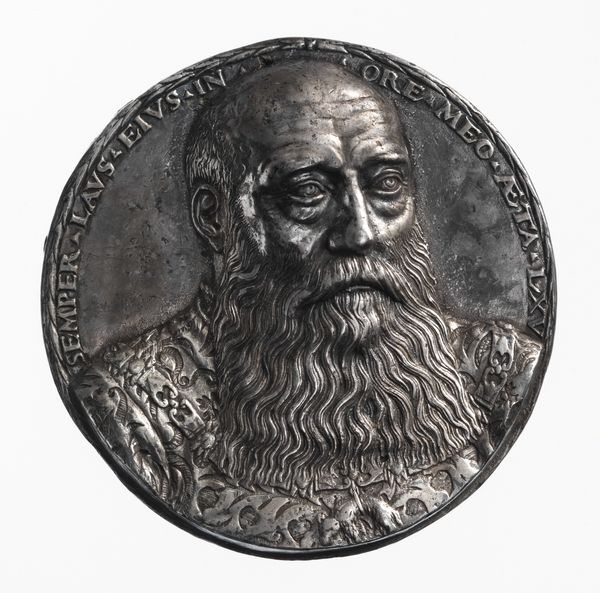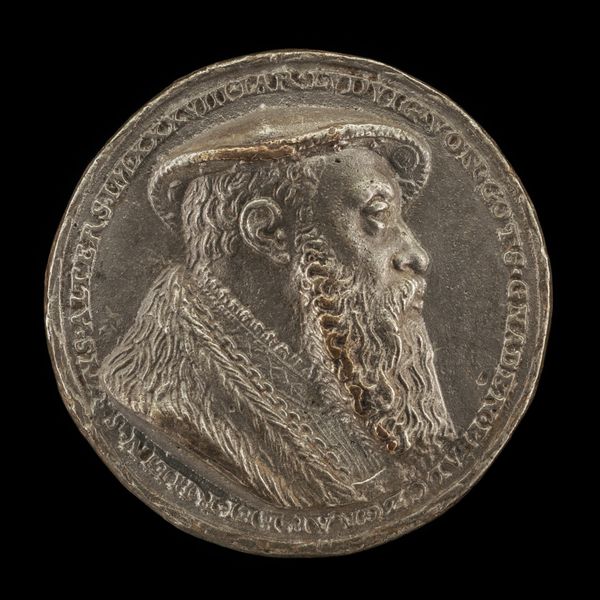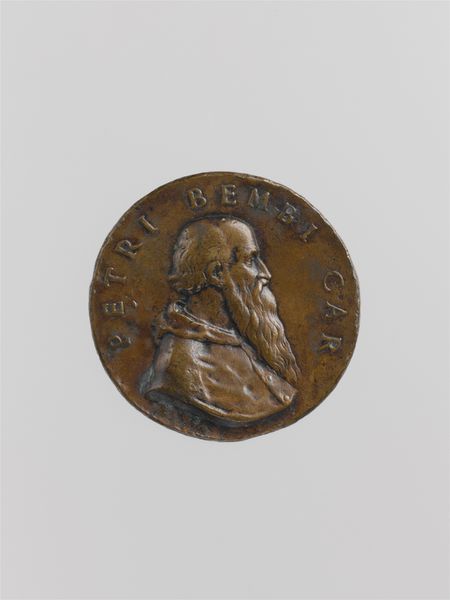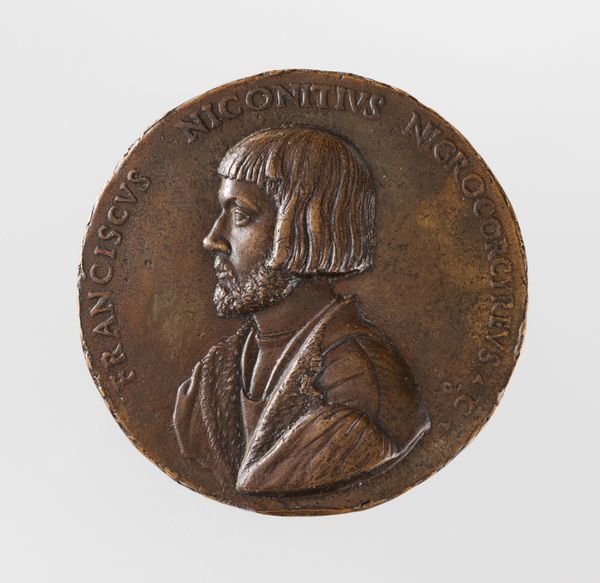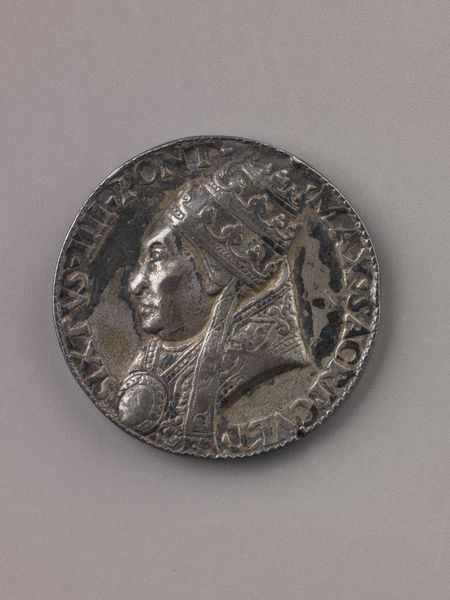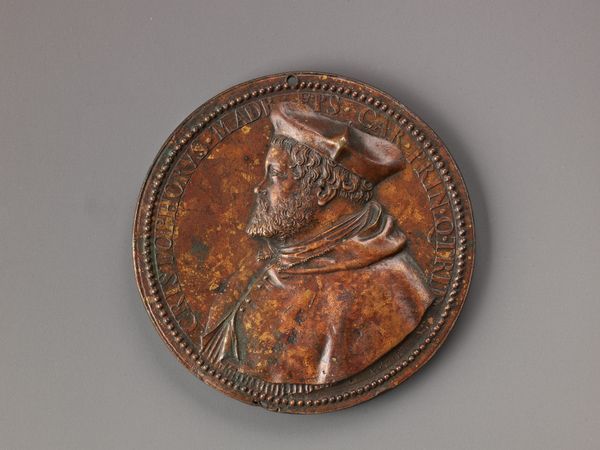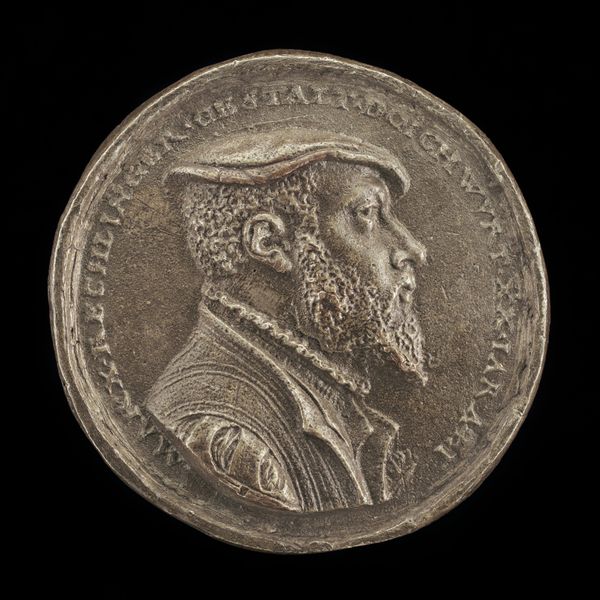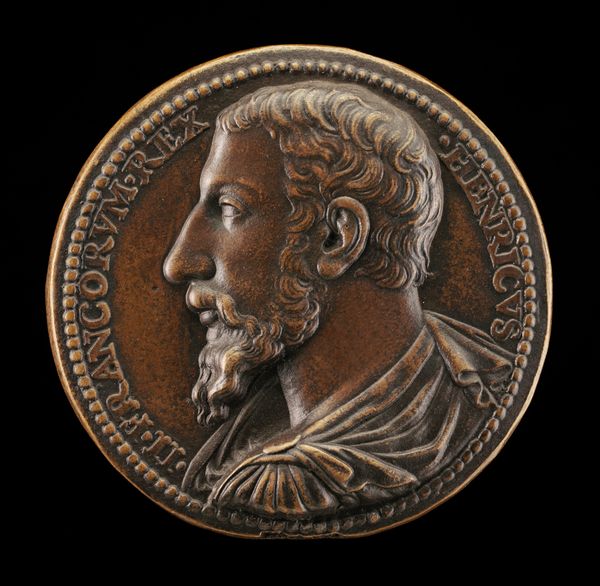
Francesco da Sangallo and Elena Marsupini, his wife 1551
0:00
0:00
bronze, sculpture
#
portrait
#
sculpture
#
bronze
#
11_renaissance
#
sculpture
#
history-painting
#
italian-renaissance
Dimensions: Diameter: 3 3/16 in. (81 mm)
Copyright: Public Domain
Curator: Here we have the bronze relief sculpture from 1551 depicting Francesco da Sangallo and his wife, Elena Marsupini. Editor: The patina! It’s lovely, evoking a gravitas proper for commemoration. The scale is intimate—suggesting perhaps it was something designed to be held. Curator: Indeed. The piece exemplifies Renaissance portraiture. Notice how Sangallo’s profile is sharply delineated. The lines articulate character; a kind of austere dignity. Editor: And look closely at the drapery; those folds weren’t just 'found'. Consider the labour, the hours sunk in to mastering wax and bronze casting needed to make these materials *speak*. The production elevates them both. It's an active honoring. Curator: Absolutely, and the composition uses circular format characteristic of medals, lending a classical feel, a nod to ancient Rome where the round form signified prestige and achievement. Look, too, at the text encircling the portraits – a formal declaration underscoring their union. Editor: It brings to mind, too, a market transaction, a bespoke status symbol hammered out—no pun intended!—for social positioning. Bronze, unlike cheaper metals, signifies a certain purchasing power—but beyond mere cost is also the skill set on show, and therefore the values ascribed to craft and ingenuity within their world. Curator: But beyond surface valuation, look again how Francesco is ennobled through the very sculptural qualities. He gazes to the distance as the text proclaims nobility and pedigree; Marsupini less so. This construction presents us with hierarchy but within clear design considerations. Editor: Hmm. Perhaps we ought to contemplate bronze not just as inert stuff. See, through skillful crafting it transforms a familial status play to artistic output reflecting cultural attitudes surrounding male visibility and women’s status, the means reflect the mindset! Curator: A complex, powerful reminder. It exemplifies that nexus point between life, form, and legacy that defined the Renaissance artistic ambition. Editor: It’s clear how Renaissance economics also prized skill itself as a symbol and not simply just 'beauty'.
Comments
No comments
Be the first to comment and join the conversation on the ultimate creative platform.
